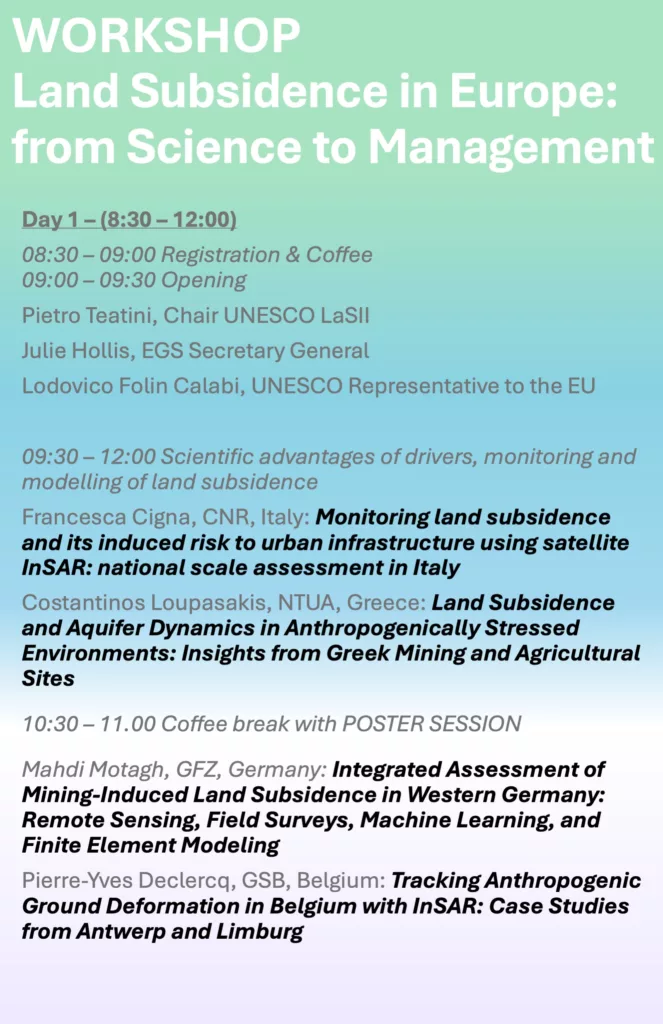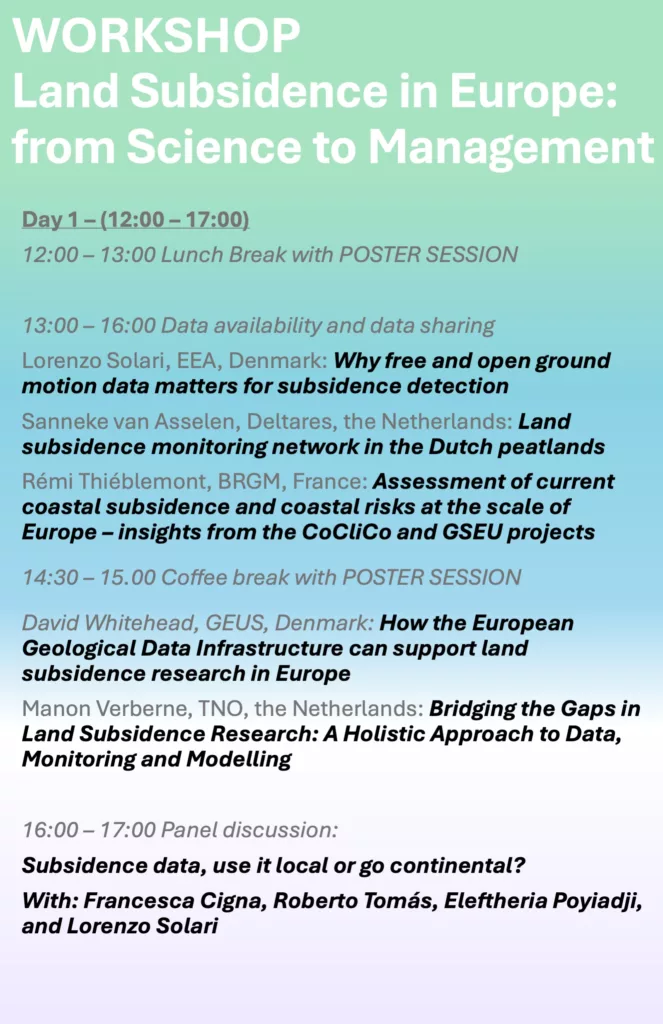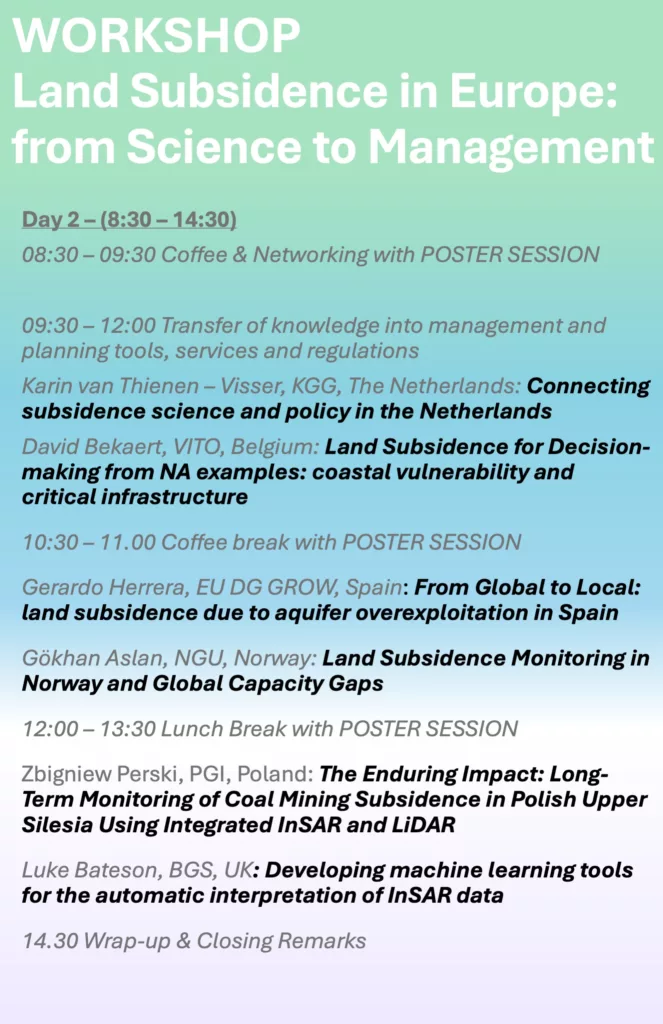We proudly present a workshop jointly organized by UNESCO’s Working Group on Land Subsidence (LaSII) and the Geological Service for Europe (GSEU). The workshop is being held in conjunction with the celebration of the 50th anniversary of the UNESCO International Hydrological Programme and 60 years of water sciences at UNESCO.
Please use the following link to register for the event.
Land subsidence affects almost all areas humans conduct subsurface activities, ranging from mining and hydrocarbon exploration, to groundwater pumping and land use change. This inflicts damage to the built environment, enhances groundwater salinization, and increases flood risks. The impact of land subsidence relates to geological subsurface conditions combined with the nature and intensity of subsurface activities. As a result, the rate of surface lowering and its negative consequences are unequally distributed among European countries and cities. Therefore, not all countries have a matured research tradition on this topic. Prime examples of countries with strong research traditions are a.o. Italy and the Netherlands (groundwater management and hydrocarbon extraction), Spain (groundwater overexploitation), and Poland (coal mining). However, in view of climate change and the energy transition, extreme weather events such as drought and changing use of the subsurface such as geothermal activities and mining, might instigate land subsidence in areas that staid previously relatively unaffected. Therefore, the aims of the workshop are 1) disseminating the state-of-the-art of scientific advances regarding understanding the drivers of land subsidence, monitoring subsidence and modelling its processes, 2) sharing knowledge on data availability, 3) establishing a broad network among European land subsidence experts and delegates of the EGS-network, and 4) improving the transition of state-of-the-art knowledge on land subsidence into management and planning tools, services and regulations.




